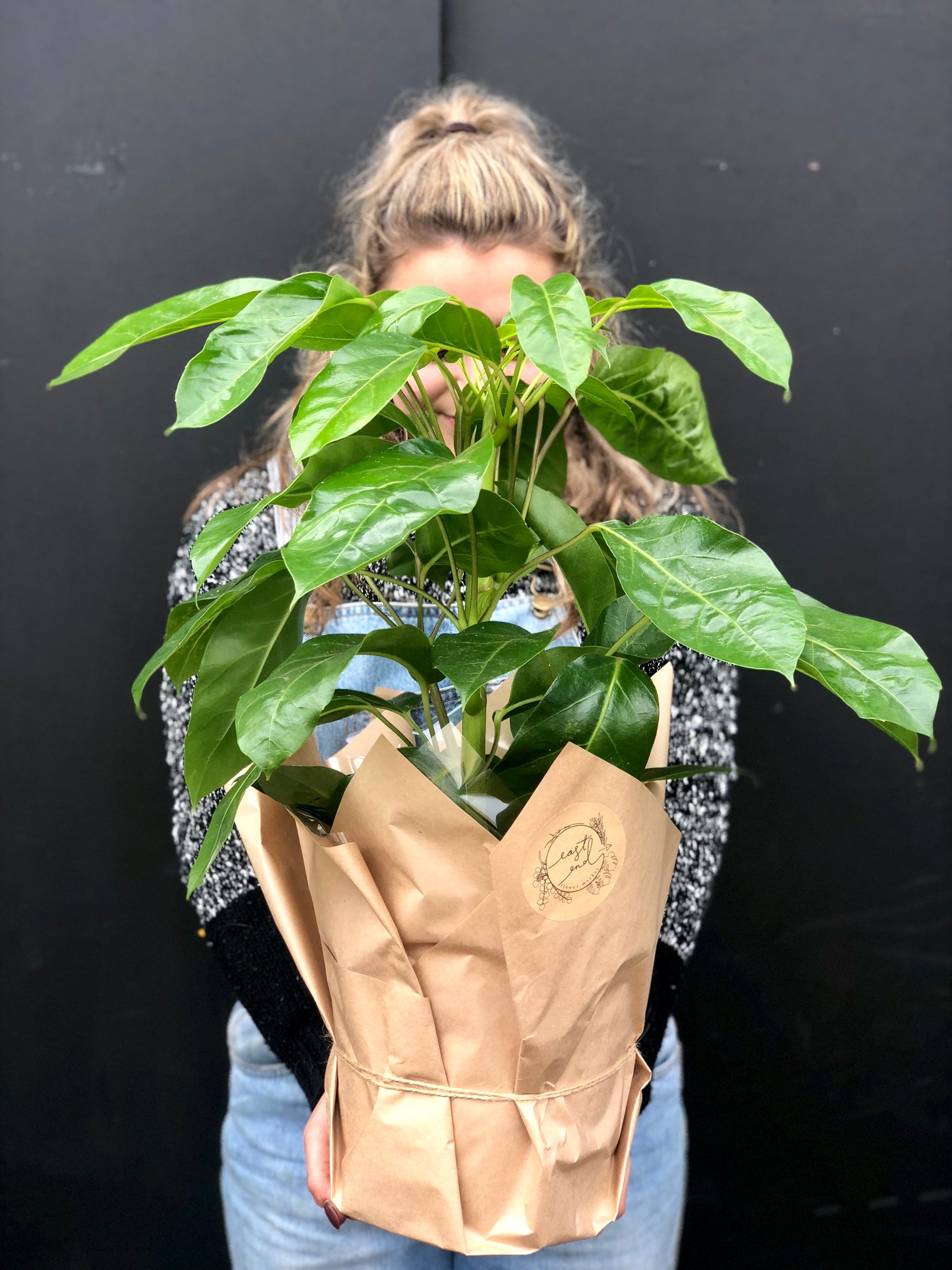How to care for your
EEFM Umbrella Tree
PLANT PROFILE: Umbrella Tree
PLANT PROFILE:Umbrella Tree / Schefflera Actinophylla, Amate
Common Names: Umbrella Tree, Amate or Octopus Tree
Scientific/Botanical Name: Schefflera actinophylla
Type of plant: Schefflera
Flowering: The Umbrella Tree blooms bright red/purple flowers in varying seasons. The flowers have been known to be described as inflorescencesclustered at the end of the branches that look like upside down octopus’ tentacles.
Origin:Eastern Queensland and Northern Territory forests of Australia,New Guinea, and Java.
Watering:They require well drained soil. A good drink every week and a half should do the trick, allowing the soil to dry out before watering again. The Umbrella Tree are more tolerant of dry soil than wet. Leaves will turn brown/black if overwatered & the soil is kept wet. They don't like having wet feet, so empty the drainage saucer or pot that it sits within after watering.
Climate: Scheffleras love humidity though are quite tolerant of dry air within the house.
Sunlight: Nice & bright but no direct, afternoon sun otherwise the leaves may burn. Amates tolerate lower light than the Tupidanthus’ (another, and similar, type of Schefflera). Spin the plant every now and then as they grow towards the light.
How does the Plant go with pets?
If your furry friend is a plant muncher, it’s best to sit this one up higher where they can reach it. When consumed, the Schefflera can be toxic to all of our animals.
How big does the plant grow? As a houseplant, it generally stays smaller than 10′ tall. This is not a narrow plant so make sure you have the space for it to fan out.
Fertilizer: Growing season for most plants is in the warmer weather. It is best to fertilize with a diluted liquid fertilizer in the growing season. Umbrella plants don't require regular fertilizing, though for faster growth, give it a standard diluted plant fertilizer once a month during the warmer months.
Repotting: Use a good quality soil based potting mix. If you wish to repot, move the plant into a pot one size larger in early spring.
Common Problems:
-
The Umbrella Tree can be more susceptible to pests like scale and spider mites if the air is too dry within the home – TO TREAT: dab the pests with cotton ball dipped in a diluted methylated spirit mixture and scrape them off with a toothpick.
-
Leaves turning brown or yellow – If the leaves feel damp and soggy to touch, this could be overwatering. If the leaves are crunch and dry, give the plant a good water and regularly spray the leaves with water from a pray bottle to create a good humid environment and give it some moisture


